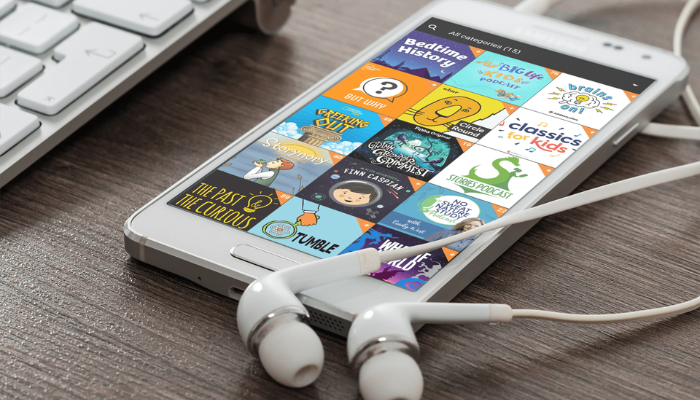Technology for homeschooling is no longer a futuristic concept—it’s the present reality for millions of families. As traditional education systems face challenges ranging from overcrowded classrooms to limited personalization, more parents are turning to home education supported by modern tech. But how exactly is technology reshaping the homeschooling landscape?
In today’s digital era, technology for homeschooling offers more than just convenience. From adaptive learning platforms and interactive tools to AI tutors and virtual classrooms, tech is revolutionizing the way children learn at home. This article explores the top tech trends powering home education, how they improve learning outcomes, and what every parent needs to build a tech-savvy homeschool environment.
Smart Learning Platforms: Personalized Education at Your Fingertips
One of the most significant advancements in technology for homeschooling is the rise of smart learning platforms. Tools like Khan Academy, Time4Learning, and IXL Learning provide personalized lesson plans, instant feedback, and gamified assessments tailored to each student’s pace. These platforms use AI and data analytics to track a child’s progress and adapt content accordingly, ensuring no student is left behind.
Moreover, these platforms support multiple learning styles—visual, auditory, and kinesthetic—by offering multimedia content like videos, interactive quizzes, and live simulations. Parents can monitor progress through dashboards, while students enjoy an engaging, tech-enabled educational journey. This level of customization is rarely possible in traditional classrooms, making these platforms a vital component of modern homeschooling.
Virtual Classrooms and Video Conferencing: Bringing the World to Your Living Room
Virtual classrooms have bridged the gap between home-based education and real-time, face-to-face interaction. Using tools like Zoom, Google Meet, and Microsoft Teams, homeschooled students can attend live classes, participate in group projects, and interact with peers and instructors globally. This not only enhances socialization but also mimics the collaborative environment of a traditional school.
Technology for homeschooling via virtual classrooms has also introduced access to remote learning with certified teachers and tutors. Many homeschooling families now enroll in part-time online schools that offer structured lessons and grading systems. This hybrid model allows parents to focus on broader educational goals while trained educators handle core subjects, ensuring a balanced and comprehensive education.
Educational Apps and Gamified Learning: Making Education Fun and Interactive
Educational apps are a cornerstone of technology for homeschooling. Apps like Duolingo (language learning), Prodigy (math), and Scratch (coding) make learning interactive and fun. These apps turn complex concepts into simple games, keeping children motivated and engaged. With built-in rewards, progress tracking, and challenges, children often spend more time learning without even realizing it.
Gamification also addresses common homeschooling challenges such as motivation and attention span. Instead of using static textbooks, kids explore worlds, earn badges, and unlock new levels while mastering curriculum content. Parents can customize apps based on age, subject, and difficulty level, making them flexible tools for every homeschool setup.
Cloud-Based Storage and Digital Organization: Keeping Lessons on Track
Managing lesson plans, student work, and grading can be overwhelming without the right tools. Cloud-based storage solutions like Google Drive, Dropbox, and Microsoft OneDrive simplify organization by storing all educational materials in one secure location. Parents can create digital folders for each subject, track assignments, and access resources from any device.
Moreover, collaborative tools like Google Docs and Microsoft OneNote allow students to work on projects with others, receive real-time feedback, and maintain digital portfolios. These technologies streamline lesson planning, reduce paper clutter, and offer a modern solution to homeschooling organization. In an increasingly mobile world, cloud technology ensures that learning continues uninterrupted wherever you go.
Assistive Technologies and AI Tutors: Supporting Diverse Learners
Technology for homeschooling is not one-size-fits-all. Assistive technologies cater to students with special learning needs, offering features like text-to-speech, speech-to-text, and adjustable interfaces. Tools such as Grammarly, Immersive Reader, and dictation software enhance accessibility and help all children thrive academically, regardless of their learning style or ability.
AI tutors like ChatGPT and Google Bard provide 24/7 academic support across subjects. These tools can explain difficult concepts, solve problems, and even simulate real-time tutoring sessions. They’re particularly helpful in subjects where parents might not have expertise, such as advanced math or science. With AI support, homeschooling parents can confidently offer a well-rounded education without needing to be experts themselves.
Conclusion:
The integration of technology for homeschooling has redefined what it means to educate from home. From personalized learning platforms and gamified apps to AI tutors and virtual classrooms, these tools empower parents and engage students like never before. With the right technological resources, homeschooling becomes not only feasible but also highly effective, adaptable, and inspiring.
As technology continues to evolve, so too will the possibilities for home-based education. Families who embrace these innovations today are setting the stage for a smarter, more connected, and more successful future for their children.
FAQs about Technology for Homeschooling
1. What is technology for homeschooling?
Technology for homeschooling refers to the use of digital tools like apps, platforms, and devices to enhance and manage education at home.
2. Is technology necessary for effective homeschooling?
While not absolutely necessary, technology greatly enhances homeschooling by providing resources, personalization, and real-time feedback.
3. What are some popular educational apps for homeschoolers?
Popular apps include Khan Academy, Duolingo, Prodigy, Scratch, and BrainPOP, which cover a wide range of subjects.
4. How do virtual classrooms work in a homeschool setup?
Students use video conferencing platforms to join live lessons, interact with teachers, and collaborate with peers.
5. Are AI tutors reliable for homeschool students?
Yes, AI tutors like ChatGPT provide accurate explanations and support, especially helpful when parents aren’t subject experts.
6. How can I keep my homeschool organized with tech?
Use tools like Google Drive or OneNote to store lesson plans, assignments, and assessments in one accessible location.
7. What’s the best learning platform for different grade levels?
Time4Learning is popular for K–12, while Khan Academy is excellent for a wide age range with free, high-quality content.
8. Can technology help special-needs students in homeschooling?
Yes, assistive technologies offer customized interfaces, speech tools, and accessibility features that support diverse learning needs.
9. Are there risks associated with using too much technology?
Excessive screen time can affect focus and health. Balancing tech with offline activities is essential for holistic development.
10. How can I choose the right technology for my homeschool?
Consider your child’s learning style, age, and subject needs. Test different tools to find what works best for your family.



